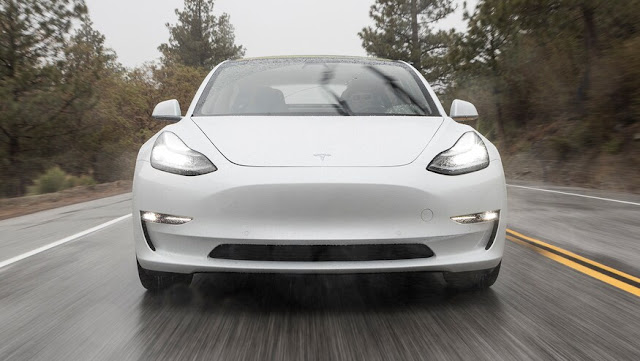2004 Chrysler Crossfire
Nowadays, the words ”Chrysler ” and “car” go together about as well as a dog's fecal matter and the human taste buds. While the Chrysler 300, the company’s resident luxury car, is actually a quite good looking car (seen below), the rest of the modern lineup is incredibly bland and uninspired.
A 2020 all-wheel-drive Chrysler 300 in Bright White CI learcoat
It seems that, try as they might, Chrysler can never shake off the bad image that was left to them by the horrid PT Cruiser.
What makes this particularly sad is that this style drought almost never happened.
What if I told you that Chrystler could have made one car to make everyone forget about the PT Loser? A car with good styling *just* enough horsepower to be considered fun, without being too over the top or breaking your bank. Sounds too good to be true right? Well it is… almost.
This is the story– of the Chrysler Crossfire.
If you haven’t heard of the Crossfire, I wouldn’t be surprised. It wasn’t around for very long and, compared to some of the other cars the company was making at the time, they didn’t really make that many.
In production for only 5 years, 2004 through 2008, and designed by award winning designer Eric Stoddard, the Crossfire was, to put it simply, stunning to look at.
The design of the car seemed to combine the stylings of the 2003 Mercedes SL range with that of the 7th generation Ford Thunderbird and ended up with something amazing.
A sweeping, almost fast-back style roof gave the car a sense of sporty flare, while the long-angular body was both beautiful and imposing.
Raked air intakes just behind the front wheels feels of the car showed that the crossfire was a sports car with some fight to it, a look backed up by the sharp cut rims and sneering front grill.
However, the back of the vehicle is where the really shocking piece of design comes in.
To complete the sloping, fast-back-esc, look of the Crossfire, Chrysler needed a back end that curved downwards in a steep slope. But, as the story goes, to save money, they couldn’t design a whole new rear end for the car. So instead, they simply modified one they already had, sloping it and adding a glass window. Which is why the Crossfire, a car that could have been Chrysler’s saving grace in the style department, ended up with a PT Cruiser for a back.
Surprisingly though, the design actually worked! Showing that, just maybe, the PT Loser actually had some use.
If you bought the Crossfire the day it launched in 2004, then you only had one choice for what was under your hood, a Mercedes-Benz M112 18 valve 3.2 Liter engine with 215 horsepower. A good engine, if not exactly a powerful one. Still, the 3.2 Mercedes engine was enough to take the Crossfire from 0-60 in just over 6.5 seconds, not bad for a. $35,000 car with an underpowered engine, and end up with an electronically limited 155 mph top speed.
Other engines would come along towards the end of the car’s short production life, most notably the 330 horsepower supercharged SRT6 engine which would shave some time off the 0-60 mark but still be limited to the same 155 mph cap.
Inevitably, as with most electronically limited cars, some people figured out a way to remove or bypass the limiter cap. Due to this exploit, people have reported being able to reach up to 177 miles per hour in their SRT6 Crossfires once the limiter was removed.
However, the car wasn’t all show and no practicality as the 2003 3.2 Liter Mercedes powered models averaged around 25 mpg, a respectable amount for a sports car.
So what happened?
The automotive community liked the car. Drivers liked the car. It drove well and got decent mileage. And on top of all that, Chrysler has made a truly good looking car for the first time in what seemed like a long while. So why did production stop?
Sales.
After plenty of unreliability from the manufacturer in the years leading up to the Crossfire, as well as the fact that the quality of Chrysler cars at the time wasn’t exactly great, the Crossfire just wasn’t selling the way they needed it too. And when sales figures slowed to a sluggish 230 units a day in 2005, things only started to get worse for the car’s chances of survival. After a move to import some Crossfires to the United States and Mexico failed to gain enough interest, the bosses at Chrysler decided to pull the plug in 2007, with the final Crossfire rolling off the assembly line in December of that year.
But all hope is not lost!
In recent years we’ve seen companies revive, or plan to revive, previously retired sports cars. In 2019, the world saw the return of Toyota’s much believed sports icon, the Supra, a car that had been out of action since 2002. Around the same time, rumors of a return for either the Celica or MR2 also gained traction, rumors that Toyota has not, as of the time of writing, dismisses. Even Mazda has announced the return of their rotary-engine RX sports car line with the 2019 RX-VISION concept car as well as practically confirming a new car– the RX9.
This means that if we, the people, just make enough noise, then there may be another chance for the Crossfire.
Until then, we’ll just have to deal with what we’ve got– the comparatively few production models that already exist out there, and seeing the car appear in tv shows such as The Flash and games such as Forza Motorsport 4.
































